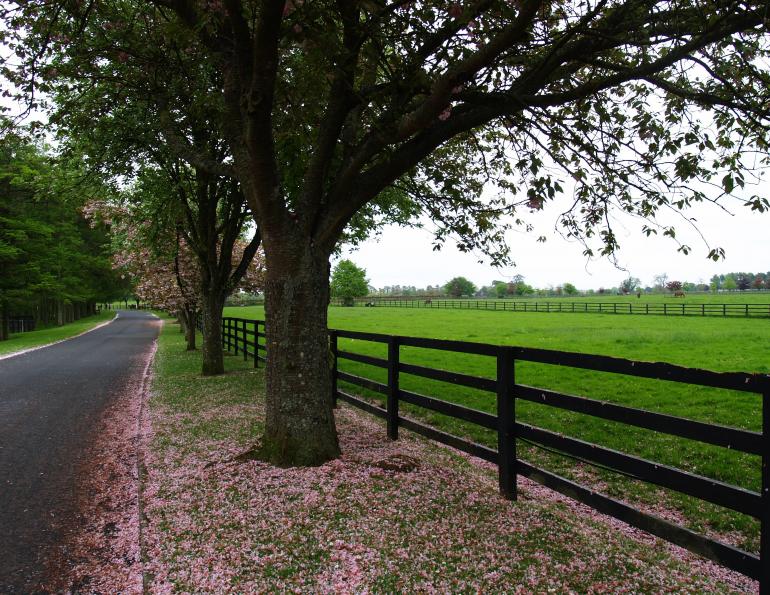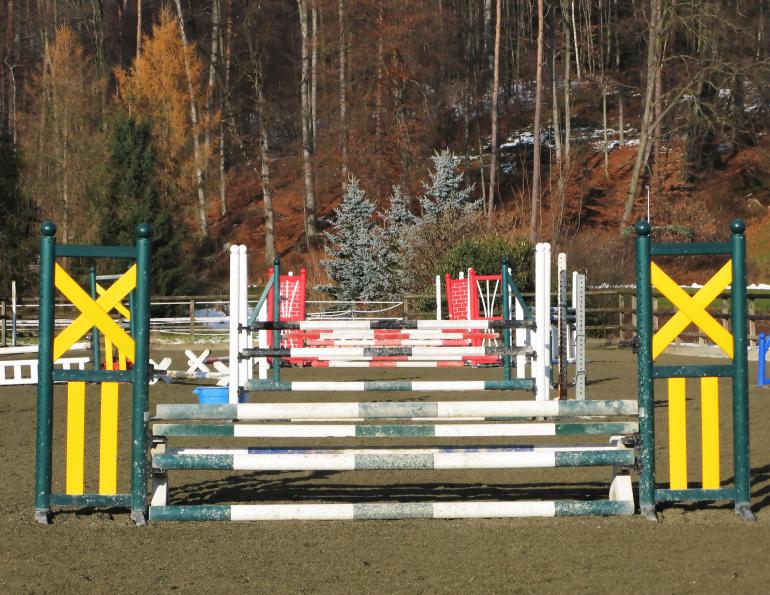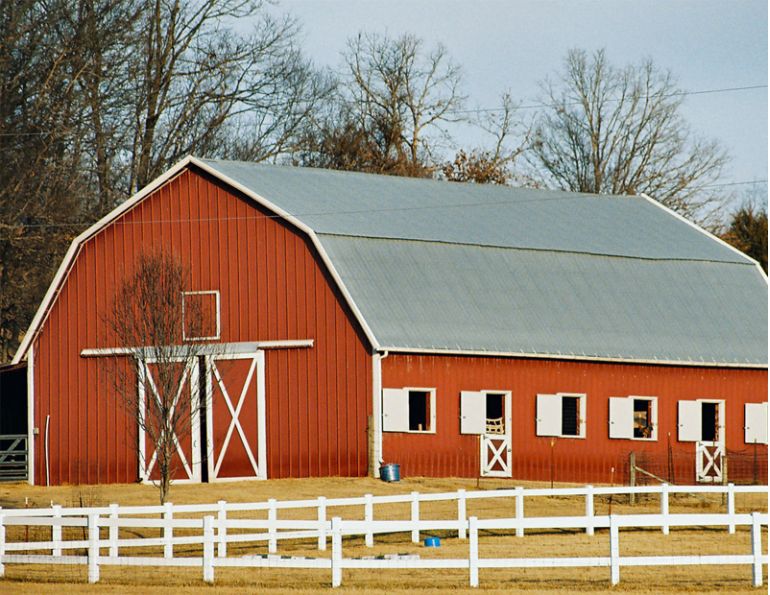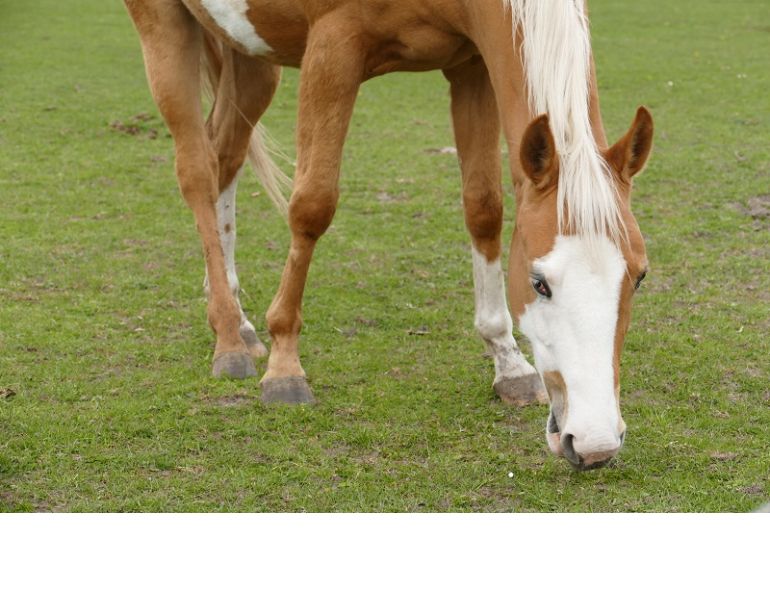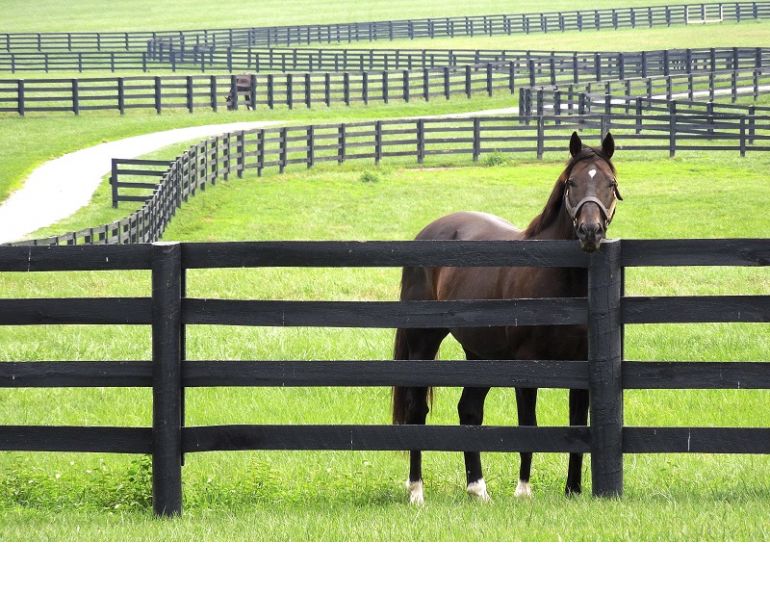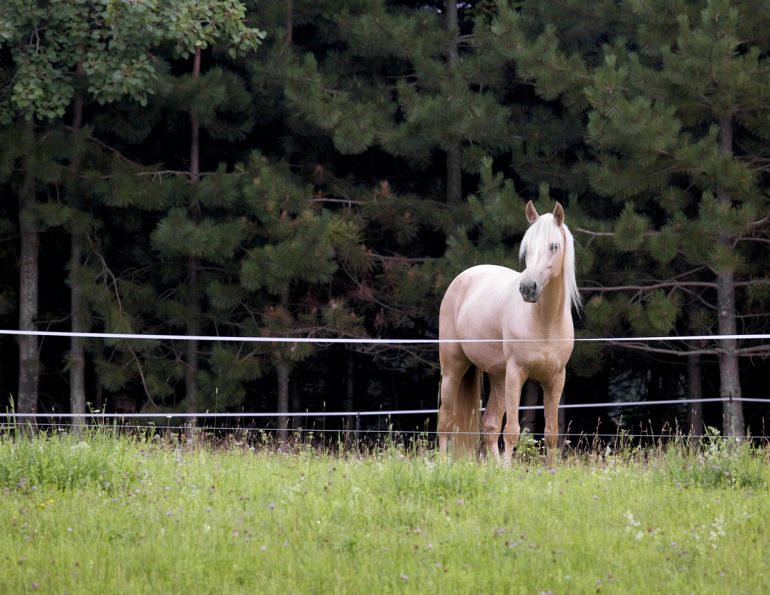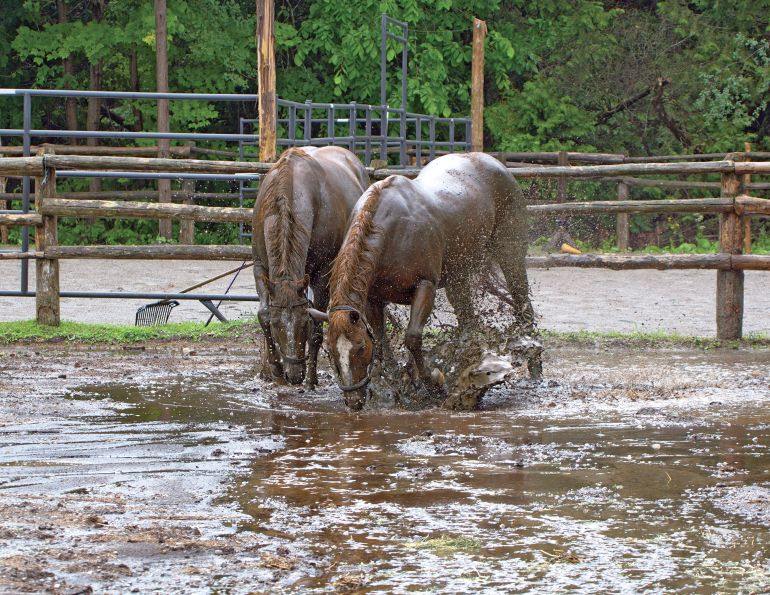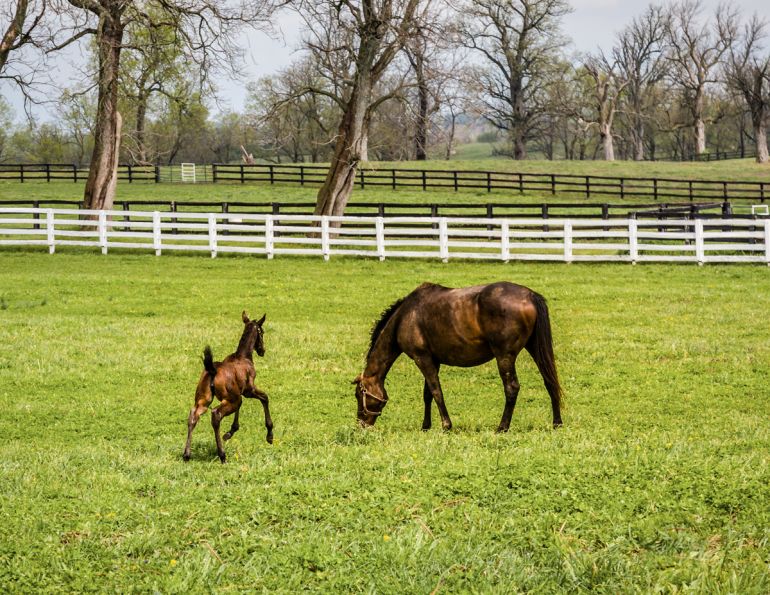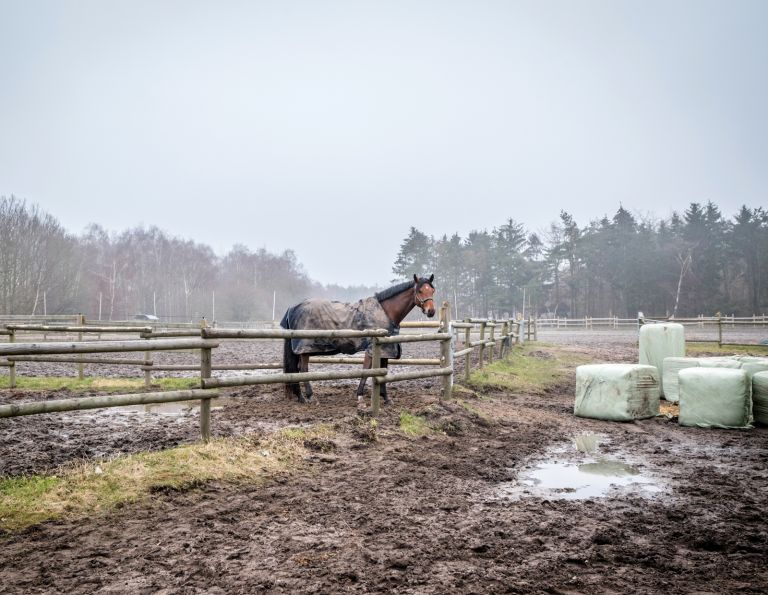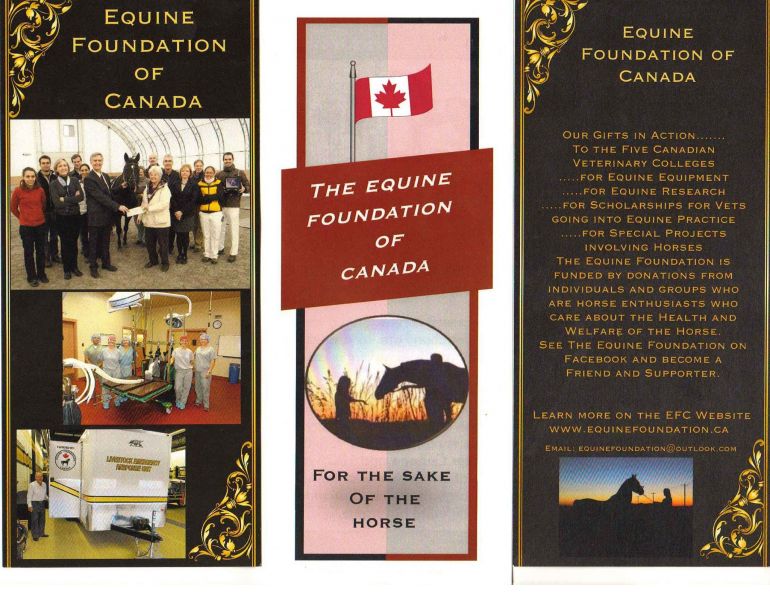By John Ferris, Full Dip. Tech., Prod. Eng.
The containment of your horse is a very important and serious business, and doing the job right the first time is worth every bit of effort and expense you lay out. When planning your fencing project, try to eliminate as many potential problems as possible and keep the safety of the horse uppermost in mind.
During the planning stage, consider all of the following points:
1. Location — Where should the paddocks and pastures go in relation to the barn? Try to eliminate long walks.
2. Convenience and Safety — Think about erecting the fence lines where horses can be released into paddocks and pastures from a driveway or central alleyway. Shuffling and handling horses in order to move another is time consuming and can be dangerous — especially if you have to leave the chores to someone else on occasion.
Your horses will be happier — and easier on the fence — if they have larger paddocks with something to munch on, and room to move. Photo: Robin Duncan Photography
3. Paddock Size — Do not make loafing paddocks too small; otherwise, you must be prepared for your horses to get bored on the bare ground and start bothering other neighbours — and the fence. Many people have blamed a fencing product for poor performance because it did not stand up to chewing, kicking, and pushing. There is no fence on the market that can be guaranteed against extreme odds — the fence is at the mercy of the behaviour of the horse and the horse will be much better behaved if it has room to move around with something constructive to do, such as munching on some sort of forage. If you have no alternative but to erect small loafing paddocks, try to have double fencing between problem areas and problem horses, and consider the electric option.
4. Keep Layout Simple and Sensible — Think about the layout of the fencing job at hand. Keep the fence lines as simple as possible and in the longest, straightest lines that you can manage. Keep corners and direction changes to a minimum. Every time you do a major change in direction you need to brace the fence line, especially with the installation of today’s high-tech, high-tensioned fencing materials. Take into consideration the problem of future overgrazing of your pasture and paddocks; they will look like minefields with overuse. Pastures will have to be rested and you will benefit economically from increased pasture growth and better animal health if you are able to rotate. Therefore, the longer you can make your perimeter fence in the most convenient position, with suitable cross-fencing, the easier it will be for you and more enjoyable life will be for your horses.
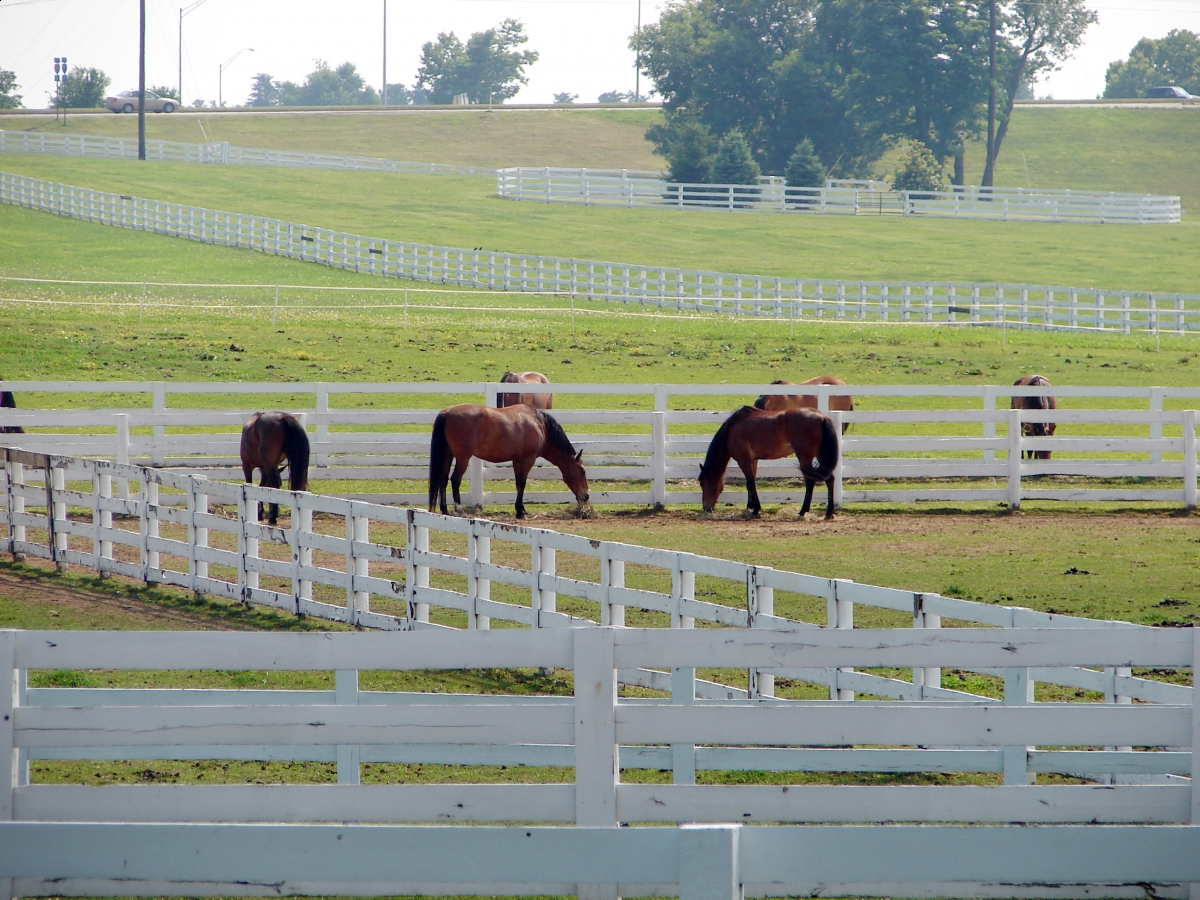
To determine the best fencing plan for your property run a string line first until you are happy with the layout.
If you are not sure of the best fence plan for your property, do an experimental run with a string line, and do your changes then. I always work with the line at ground level. If you can conveniently run a string line and are happy with the layout, most probably your fence line is ready to have the posts pounded.
Be sure all the fence lines are clear of debris; you will be much happier with the result if you can run a straight, clear line.
Try to plan your fences to save your good trees; shade and shelter are very important factors to consider when you are containing animals. However, consider the fact that trees can blow down and fall on fence installations. Select good, healthy trees to remain standing and consider removing unsafe, unhealthy, and dead trees. If there are no trees in the paddocks then the horse will look for an alternative area to rub; often the fence will become the tree for this purpose, so beware of this situation and potential problems caused by rubbing and leaning on the fence.
Try to run fence lines along the highest point of the site. Do not go too close to ditches as the posts may come loose if pounded too close to previously excavated ground. If the ditch runs a lot of water in winter, the post can become eroded. Always use longer posts to compensate for this if such a situation cannot be avoided.
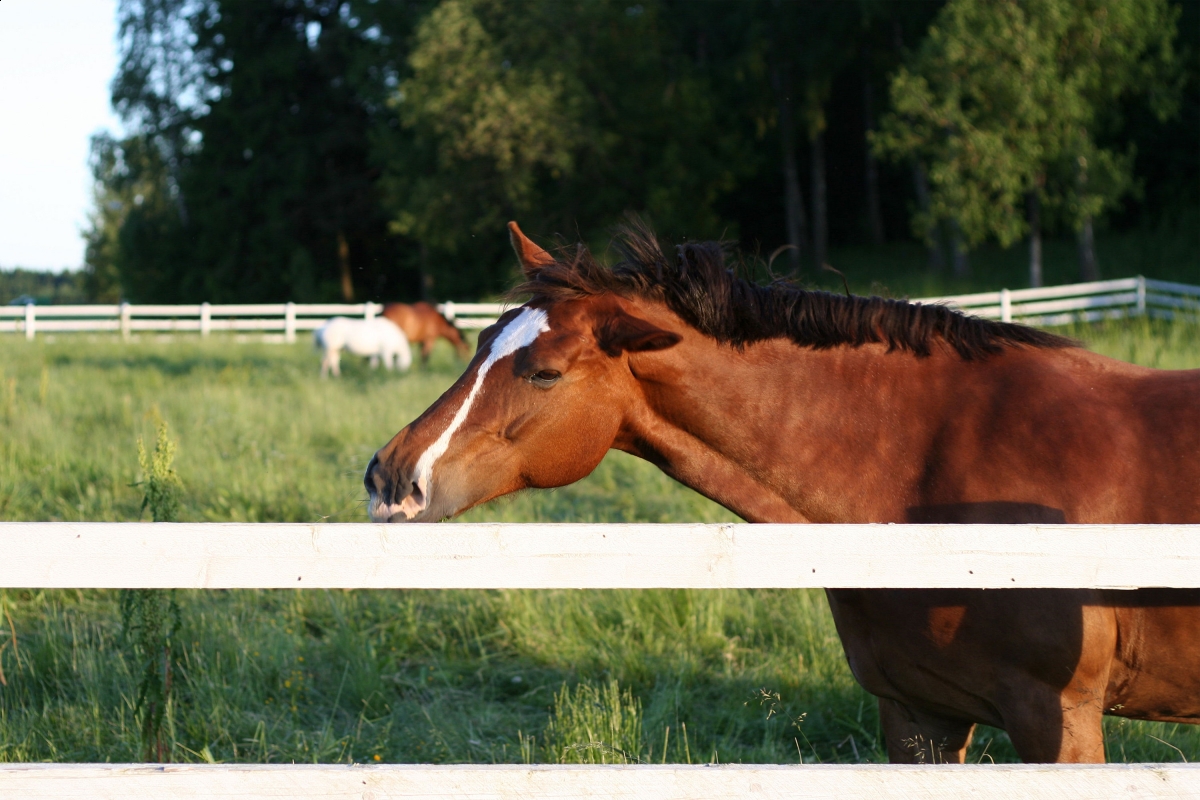
If there are no trees, the fence will “become” the tree as the horse looks for somewhere to scratch that itch.
5. Plan Gates Carefully — If you are unsure where your gates should go, then set your gate posts temporarily in the ground with the aid of a hole made with a crowbar. Try to give your gateways a straight line of approach. This is really beneficial if you are moving a horse trailer, tractors, and delivery vehicles. Keep both sides of the approach on level ground, as this will save vehicles from sliding into gate posts on those icy days of winter.
6. Costs — When you are planning your fence project remember: the perimeter does not increase proportionately as pasture size increases. Costs per acre are less for larger pastures. For example, a ten acre parcel is approximately twice as expensive to fence as a two acre parcel, but has five times the area.
7. Safety First — Always think safety first; this means no acute angles to create entrapment areas and giving a great deal of thought to the position of gates. For adjoining paddocks, do not crowd gates next to each other or you may end up with a busy spot that could lead to problems in handling and moving animals. There should be no trees within a few feet of the inside of the fence line unless you can isolate those trees from the horses; horses will stress the trees, especially young ones.
In conclusion, think of your pocketbook, go with the simplest route, consider future maintenance, and make your choices carefully.
Author John Ferris and his wife Lesley have operated Ferris Fencing for more than 20 years, specializing in equine, general farm, horticulture and vineyard applications, complete electric systems and electric nets. As farmers, horse owners, and engineers, they are experts in the technical aspects of installation and application of fencing systems. For more information, visit www.ferrisfencing.com.
Main article photo: When planning a fencing project, carefully consider all aspects of the layout in terms of safety, convenience, efficiency, and cost.
This article originally appeared in the July/August 2009 issue of Canadian Horse Journal.



